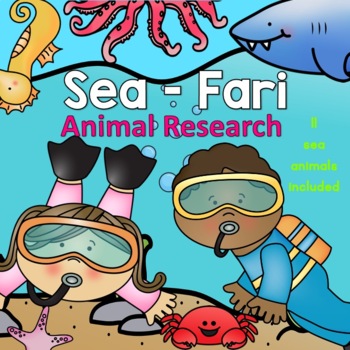"Seafari" Ocean Research Unit for Kindergarten
- PDF
What educators are saying
Description
“Seafari” Ocean Animal Research Unit for Kindergarten - 126 pages
*Large, colorful animal posters for (11) Ocean animals
List of animals used:
jellyfish, seahorse, sea turtle, octopus, dolphin, whale, shark, pufferfish, clownfish, stingray, sea star (star fish)
*Real and Cartoon animal cards in full color....
*Can Have Are charts for each animal.
*Bubble Maps for each animal.
*Resources page for each animal.
*Writing Prompts for each animal.
*Animal research note page and final product booklets for each animal (in color and black and white)
*My Seafari booklet – reflection for after a field trip to aquarium
*Colorful animal fact sheets for each animal.
*Seafari research hat and badges
* Ocean View” craft idea
If you are looking for more ANIMAL RESEARCH UNITS, try these!





